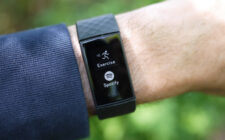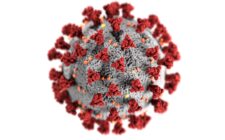Leprosy is the chronic infectious disease well known from the biblical times. Usually targets the skin and the peripheral nerves.
It has a long incubation period and in severe cases can cause physical disabilities.
In addition to the name leprosy it is also said to be Hansen`s disease, named after Dr. G.A.HANSEN. He is the one who first recognized the bacterium causing leprosy in 1878.
Main Cause for leprosy:
Leprosy is caused by the microorganisms, mostly by the bacteria. It is caused by the acid-fast bacterium called MYCOBACTERIUM LEPRAE (a rod shaped bacteria), affecting mainly the skin, peripheral nerves and the mucous membrane.
Leprosy is the chronic infectious disease well known from the biblical times. Usually targets the skin and the peripheral nerves. These bacteria’s can more easily affect the children than the adults.
Incubation period:
It has a high incubation period and will progress gradually. It can take more than 3 or 5 years or even more to show the symptoms.
Types of leprosy:
1)Tuberculoid leprosy and 2 )Lepromatous leprosy Both these types have same characteristics. But the lepromatous is the most severe one characterised by large nodules formation.
Risk factors for transmission of leprosy:
-
- Mostly it is believed that it vastly spread through the respiratory droplets of the infected person to other person.
-
- Living together with the infected person
-
- Few genetic connection in the family history
-
- Poor environmental condition
-
- Poor life style management
-
- Poor intake of nutritious foods to develop immunity
- Unsafe travel to the leprosy prevalent areas.
Although various risk factors are involved in causing leprosy only few are more susceptible to the infection outburst.
Symptoms seen in leprosy:
-
- Soreness of the skin with pale colorization
-
- Skin lesion is abruptly seen with thickenings
-
- Loss of sensation especially in the arms and legs
-
- Weakness of the muscles of whole body leading to claw hand deformity and foot drops
-
- Wastages of muscle can be seen in few cases
-
- Protuberance or bump formation
-
- Irritation and reddening of eyes with pain and can even be blindness
-
- Hoarseness in speech
- damage of nasal cartilage
Diagnosis of leprosy:
To diagnose the leprosy condition doctors look for the present health condition and the symptoms exhibited by the patients. If there is a strong suspicion of leprosy then physical examination and skin biopsy tests are undergone. Skin biopsy tests give the accurate results of leprosy occurrences by detecting the presence of bacteria in the sample tissue taken. In diagnosis of leprosy few other skin diseases with the common symptoms should be avoided. These can be done by the identification of exact clinical symptoms shown by the leprosy patients. Most commonly there is characteristic skin abrasion kind with hypo pigmented seen in leprosy. There also individual or further peripheral nerves are give the impression of thickening. Few other tests like live function test and creatinine test are made to spot any organs are affected.
Treatment and management of leprosy:
As leprosy is the bacteria induced disease it can be easily treated by the administration of antibiotic drugs. Usually the drugs are given in multi-drug format. Few kind need such prescribed quantity and combination to treat effectively. The most commonly used drugs are
- DAPSONE
- RIFAMPICIN
- CLOFAZIMINIE
These drugs are administered according to the doctor’s advice. Doctors prescribe drugs combination according to the type and adult and children categories. Earlier the detection easier the treatment and management of leprosy condition WHO made available MDT drugs free to all endemic countries ever since 1995. From 1995-2000 the Nippon supply of Japan took over the sponsor for free supply of drugs through WHO. From 2000, Novartis foundation has guaranteed the free drugs availability till 2010 through WHO. In the management of leprosy main feature is to prevent the disability occurrences. Disability can easily take over if the leprosy condition is left untreated. According to WHO even though the leprosy has been eradicated in India since 2005, India are the highest contributor to the fresh occurrence of the leprosy cases.
National Leprosy Eradication Programme:
The main plans of this programme are
-
- Earlier finding of the leprosy cases
-
- Regular treatment procedure with the multi-drug healing method
-
- Health instruction camps to the endemic areas
-
- Awareness campaign for all the endemic areas and others
- Rehabilitation programmes for the patients
Conclusion:
Even though the leprosy condition is not a communicable one, people are still look at them with differences in them and be separated from them. With the advancement in the technology in today’s world treatment and management of leprosy is easier in the endemic areas. The disability formation can be easily prevented. Awareness is what needed in most of the countries about leprosy. Leprosy is curable and preventable.





